Advertisement
Navigating FEMA: Some Vermont flood survivors say system seemed 'designed to make you fail'

When the Dog River began seeping into Anne Ward’s home in Berlin on the morning of July 10, 2023, the single mother loaded up her young children in a van and headed to Mosaic, a sexual violence response and prevention agency in Barre City where Ward serves as executive director.
“That was our disaster plan,” she told Vermont Public.
But Mosaic was underwater too at that point, and so the family waded to the second floor of the building to shelter in place until the water receded.
When three Federal Emergency Management Agency staffers showed up at Mosaic two days after the flood, Ward felt a surge of relief. She and her kids had been living without basic supplies at the nonprofit ever since they evacuated their home.
“We were dirty. We didn’t have clean water. We didn’t have hot water. We were in the middle of a disaster … and I was really happy to see them and start that process,” she told Vermont Public.
Her excitement was fleeting. Ward said it was shockingly difficult to get any guidance on how to apply for assistance for her small organization.
“It took weeks and weeks of me going to basically every single FEMA location that I could get to, to talk to different people and start the process of understanding what the next steps would be for Mosaic,” she said.
It was much the same as she sought help for her home, which floodwaters had rendered uninhabitable after inundating the crawl space where her oil tank was installed, and dumping more than 200 gallons of fuel.
“One of the things that I learned early on in the flood was that anybody that you talked to had one tiny piece of the pie and you needed to talk to at least 12 more people about the exact same thing. And you would get different answers depending on who you talked to.”
Anne Ward, Mosaic
Multiple FEMA inspectors visited her home and issued contradictory assessments of what kind of damage had occurred, and whether it was eligible for assistance.
“One of the things that I learned early on in the flood was that anybody that you talked to had one tiny piece of the pie and you needed to talk to at least 12 more people about the exact same thing,” she said. “And you would get different answers depending on who you talked to.”
Ward estimates total damage to her house at $100,000. After several formal appeals, she’s received an assistance award of approximately $8,000.
In the days immediately after July’s floods wreaked havoc in nearly every corner of Vermont, FEMA won plaudits for its seemingly fast response. FEMA head administrator Deanne Criswell visited Vermont less than 48 hours after the rains stopped. The following day, residents in six counties were allowed to start applying for federal aid.
Almost a year after the summer floods tore through Vermont, however, many survivors say they feel mistreated and abandoned by the federal agency that was supposed to help them. And as the state closes in on the one year anniversary of the floods, hundreds of Vermont households are either still displaced — or living in substandard conditions — as a result of flood damage.
Advertisement
Reporting by Vermont Public that includes interviews with flood survivors, state and local officials and current and former FEMA employees reveals a pattern of administrative bloat at a federal agency that, to many Vermonters, often seemed less interested in providing assistance than in finding ways to reject requests for aid.
And their stories read as an indictment of a disaster-response apparatus that has failed — catastrophically, in some instances — to repair the harm done by a natural disaster that caused more than $1 billion in damage statewide.
The findings include:
- Public records requests that show the agency had, as of March 4, incurred administrative costs of $78.3 million on a recovery mission that’s distributed about $43 million in individual assistance to flood survivors.
- Records that show that the number of FEMA staffers assigned to Disaster Recovery Centers last summer frequently exceeded the number of people who stopped in for help.
- First-person accounts from agency staffers who are “aghast at the waste” they see.
- Vermonters have struggled to get basic answers about applying for aid, and say they often get different answers when talking to different FEMA employees. Those who managed to navigate the early part of FEMA’s assistance program almost uniformly confront a bewildering process, known as “reject and appeal,” that wrongly leads survivors to believe their requests for aid have been denied. The process has created so many problems that some advocates have concluded it’s designed to prompt them to give up, and Vermont’s congressional delegation is trying to get it overhauled.
- With the federal response languishing, unpaid, untrained local volunteer groups have become the go-to resource for many flood victims, taking on hundreds of the most dire cases. But those groups say they’re hindered by a lack of federal and state help.
FEMA officials initially agreed to an interview. But citing “operational tempo” at the agency, officials said they were unavailable for a phone call. In a written response to questions submitted by Vermont Public, Brian Stevens, who works in external relations for FEMA, said the agency isn’t designed to function as a panacea for disaster survivors.
“FEMA’s Individual Assistance programs help eligible individuals and households who have uninsured or under-insured necessary expenses and serious needs caused by a federally declared disaster,” Stevens wrote. “The assistance is meant to return a home to a safe, sanitary and function residence. Federal assistance cannot duplicate the benefits provided by other sources, such as insurance, and cannot fully pay for all disaster losses caused.”
Stevens also said the obligation to help flood survivors does not fall to FEMA alone.
“We are working every day to provide equitable access to federal assistance for those who need our help,” he wrote. “But the road to recovery is a challenge involving the whole community.”
That “challenge” persists for hundreds of Vermonters, including Ward.
She and her kids will never live in their Berlin home again. And she and her co-workers will never return to Mosaic’s offices on Cottage Street. But for all the upheaval the flood caused, Ward insists that the natural disaster itself has inflicted less pain on her life than FEMA did.
“I have experiences of trauma,” Ward said. “But this experience of … navigating a system that seems like it’s designed to make you fail has been by far the worst chronic long-term stress I’ve ever experienced. And it’s taken a really, really big toll. And I just can’t seem to be able to dig my way out of it while still dealing with the bureaucracy of it.”
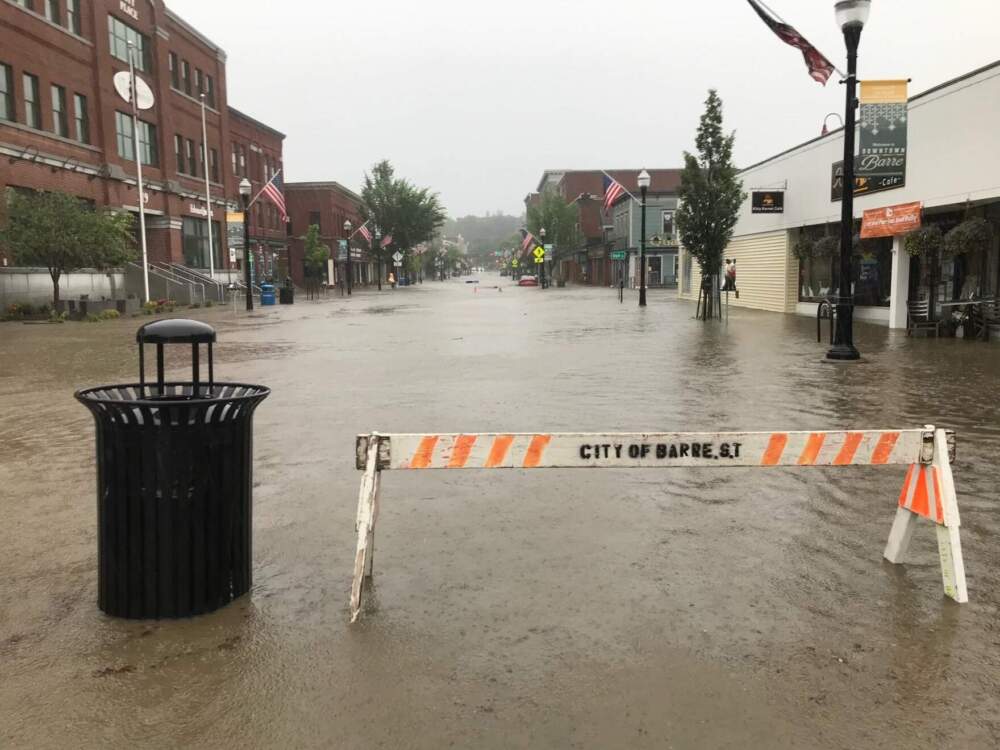
‘We will be here with you’
Over a 48-hour period last July, as much as 9.2 inches of rain fell on communities across Vermont. Cities such as Barre and Montpelier were under 4 feet of water at the height of the deluge. And nearly 100 highways closed statewide.
It was Vermont’s worst natural disaster in at least a century. And FEMA’s response was immediate and massive.
Agency staffers were flown into the state from as far away as Los Angeles, put up in local hotels, and provided with rented cars to tour damaged areas and knock on the doors of potentially affected households.
“I just want everybody here to know that FEMA is going to be here to support Vermont, to support the governor and all of your needs,” Criswell said at Vermont’s Agency of Transportation headquarters in Berlin on July 12. “As you transition from response and into the recovery phase, we will be here with you.”
The agency’s mobilization was impressive by any standard. Public records show that, between July 11 and Oct. 18, 2023, FEMA deployed a total of 782 employees to Vermont. Daily staffing levels peaked at 465 workers on July 28, and remained at 309 on Oct. 18.
Many of those workers occupied offices in a large commercial complex in Williston, where Douglas Farnham — who would later be appointed by Gov. Phil Scott as Vermont’s chief flood recovery officer — witnessed the rollout.
“Personally, I’ll admit when I showed up and saw 400-plus FEMA people working in Vermont, I was really surprised,” Farnham told Vermont Public. “I was like, ‘Wow, nobody really sees this, right?’ Nobody really knows that there’s 400 federal employees all focused on the Vermont disaster.”
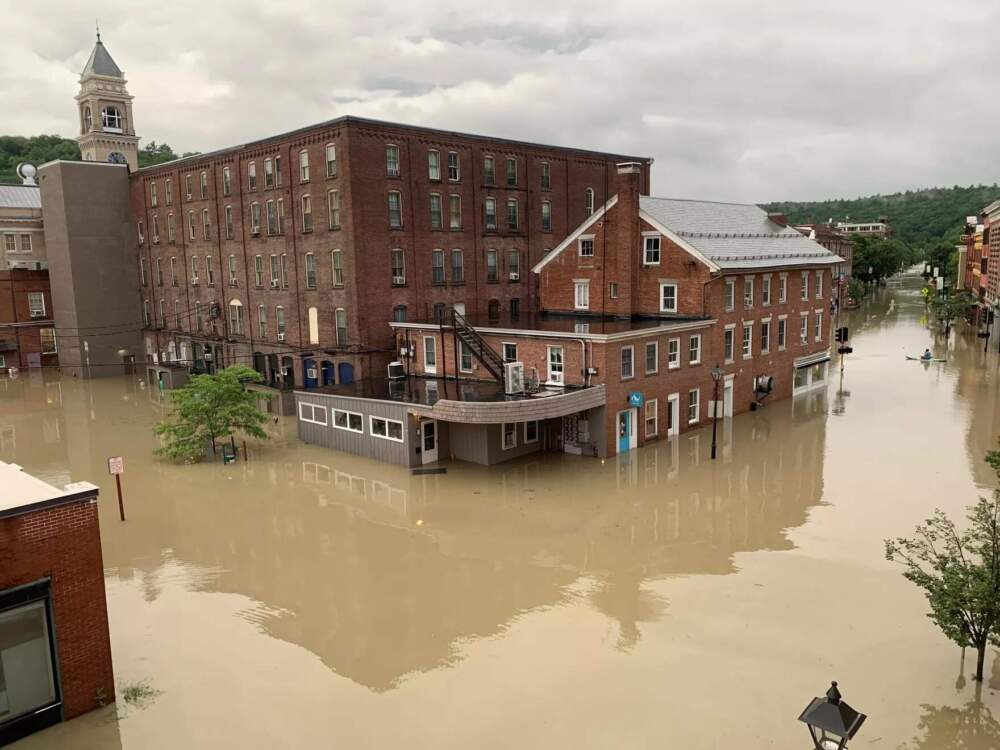
More than 90% of those FEMA staffers, according to public records, were assigned to handle individual assistance claims from flood survivors. They would end up fielding 6,306 damage claims and disbursing close to $43 million in awards.
But that $43 million in assistance is dwarfed by the amount of money FEMA has spent on itself in Vermont — $78.3 million, according to agency records.
“My experience is that they’ve spent more on not giving me money than they have on giving me money,” Anne Ward said, upon learning of Vermont Public’s findings. “If FEMA came into town, verified easily that a house was impacted … and gave $50,000 to each home or business or whatever, I think they’d save money, you know?”
Employees inside FEMA say they’re concerned not just about how much the agency is spending on itself, as compared to Vermonters in need. They are also alarmed at how little FEMA is accomplishing despite all its internal spending.
‘Aghast at the waste’
In August, Vermont Public received an email from an anonymous person who asked, “How much does it cost FEMA in order for them to give away millions of dollars to VT flood victims?”
“Never seen that amount,” the person said. “Bet it's a lot.”
That person later confirmed that they’re a current FEMA employee with knowledge of the agency’s recovery mission in Vermont. Their request for Vermont Public to investigate FEMA’s administrative costs sprang from their observations from within the FEMA bureaucracy.
“It’s like it costs us many, many more millions to give away a few million, and it’s like, this is nuts,” they said.
The person said those high overhead costs derive from the sheer number of full-time, temporary and reserve staff that FEMA deploys to disaster zones.
“It has to do with staffing … I see it all the time,” they said. “Believe me, I speak with other people in FEMA, and they are equally aghast at the waste that they see.”
The person, who’s been with the agency for several years, said the staffing overload stems from an organizational structure in which employees are permitted to undertake only a very narrow range of job duties.
“Many of these jobs don’t require one person to do that job eight hours a day. You could do multiple jobs in a day and handle it very well. But now it’s one person, one job,” the person said. “The overstaffing thing is omnipresent. Pretty much every disaster I work on now is overstaffed.”
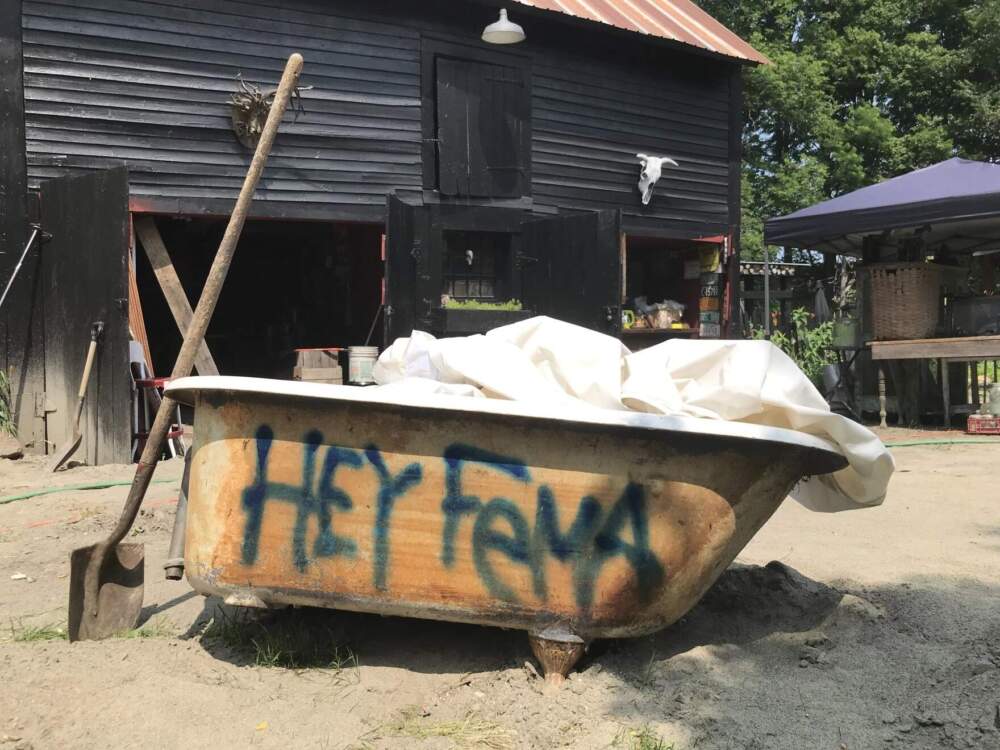
Asked how the agency determines how many staff members should be deployed to a recovery mission, Brian Stevens, with FEMA, wrote, “Every disaster is different.”
“Every day, more than 22,000 emergency managers work to make our nation safer, stronger and more prepared,” he said. “FEMA works closely with state, local, territorial and tribal partners to support their response and recovery process, the length of which varies based on the unique circumstances of the particular event.”
The employee said the operational culture inside FEMA hasn’t created any incentive to emphasize workforce efficiency.
“I don’t want to call it ineptitude — maybe it’s the arrogance of the federal government where it’s just … costs be damned,” they said. “They’re not generally keenly aware of how much money they’re spending … It can be run much, much more efficiently, and yet government by nature doesn’t seem to be interested in any level of efficiency.”
One example of overstaffing, according to the employee, was at Disaster Recovery Centers, the brick-and-mortar locations FEMA established in the aftermath of the flood. The centers were a place where survivors could stop in to talk to FEMA staff in person, and ask questions about how to file a claim or make an appeal. They were set up in places like the Barre City Auditorium in Washington County, the Barton Memorial Building in Orleans County and the Wardsboro Town Hall in Windham County.
“What kills me is we spend so much money on the administrative costs. Shouldn’t we be doing everything possible to give survivors more money in their pockets?”
FEMA employee
Records obtained by Vermont Public showed that, on 37 separate days, between July 22 and Oct. 7, 2023, FEMA had more employees staffed at DRCs than they did flood survivors who showed up for assistance. On at least 14 occasions, twice as many staffers spent their days at DRCs as survivors who visited. Over the course of the 78 days for which Vermont Public obtained records, the agency dedicated nearly one full-time staff person per day for every individual that visited one of the centers.
Asked if that was an appropriate staff-to-visitor ratio, Stevens wrote, “All disasters are different and have different resource and staffing needs.”
“Staffing needs at Disaster Recovery Centers are also based on traffic and survivor’s visits,” he wrote.
The FEMA employee said their primary concern, and the reason they contacted a media organization, is they believe that money spent on FEMA’s own operations is money that’s not spent to help disaster survivors.
“What kills me is we spend so much money on the administrative costs. Shouldn’t we be doing everything possible to give survivors more money in their pockets? The average [award], it’s a pittance,” they said. “Then they’ll go back to, ‘Oh we’re just giving them a hand up, not a hand out.’ And I understand it. We can’t be a replacement for insurance. I understand it totally. But it still seems like we’re not doing enough to maximize the money that goes in survivors’ pockets.”
Another former FEMA employee who also spoke to Vermont Public on condition of anonymity said the volume of human resources that FEMA deployed to Vermont seemed disproportionate to the labor required.
“There’s so many people here. They’re spending so much money. And people really aren’t doing that much,” they said.
The former employee began working with FEMA as a local hire shortly after the flood hit Vermont. FEMA routinely employs residents of disaster-affected communities on a contract basis as part of its response.
The person, a Vermont resident who joined on a 120-day contract, said they realized quickly that the job would not offer the meaning and satisfaction they’d anticipated.
“I was never really trained in my role and was sort of asked to sit at my computer and do online training modules that were … not really job training, more like general FEMA awareness training, and kind of asked to twiddle my thumbs a lot,” they said.
They had an office space inside the large commercial building in Williston, where hundreds of other FEMA employees were stationed when the agency arrived in the state. They said the work being performed there seemed divorced from the devastation around them.
“Generally just being astonished at this money that was being spent when it felt like a lot of people were doing a lot of nothing, or doing very small jobs. Giant teams of people doing a job that could be done by one person. Hundreds of people doing jobs on the ground in Vermont that could have been done remotely,” they said. “I spent my time there trying to figure out what the [expletive] was going on.”
The former employee said one trip to perform a damage assessment on a public building in Montpelier was emblematic of their experience.
“I spent literally eight full hours this day walking around basements in Montpelier following a team of eight people so that one person could measure the wall space. And the whole thing struck me as very strange,” they said. “It was a job for one person, but everybody was just walking around. One person had a clipboard and was recording the information. The other people were doing nothing. And that was just a normal day.”
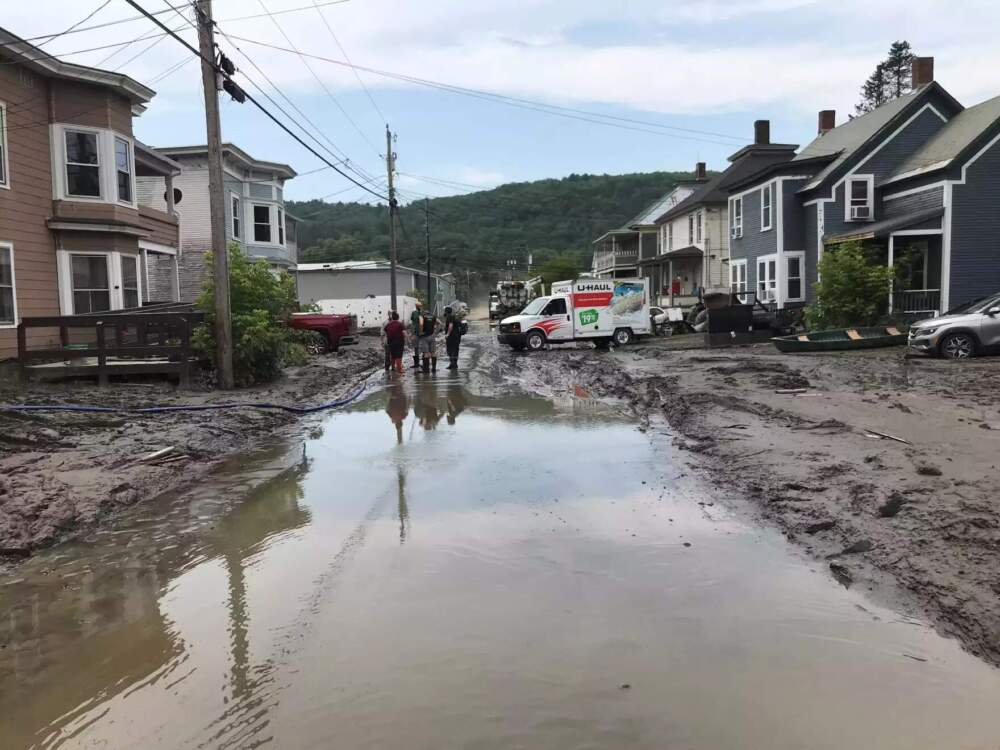
They said lack of attentiveness to time management bordered on the surreal.
“Our supervisor would encourage a two-hour lunch on the way home, or a scenic route, you know, just like anything to stay away from the office, which was pretty crazy,” they said. “It was strange to me that there’s a whole person brought to Vermont, staying in a hotel, needing a rental car, getting a per diem to do this job.”
They said their frustration peaked after reading media accounts of flood survivors who were unable to access temporary housing assistance from FEMA and were staying with family members or in churches or flood-damaged homes or, in some cases, their own cars.
FEMA told Vermont Public in a written statement that when the agency deploys to disaster sites, “we do an analysis of the area to ensure that the deployment of FEMA personnel will not impede local residents’ access to hotels.”
“In the case of DR4720VT,” the agency said in a written statement, “it was determined there would be no negative impact.”
Distrust of the system
President Jimmy Carter established FEMA in 1979. Its mission is both to “stabilize communities after a disaster,” and to “provide support for individuals and communities to build back and become more resilient than before.”
According to local recovery volunteers working in some of the hardest hit communities, however, that mission remains far from accomplished, especially for lower-income Vermonters who bore a disproportionate share of flood damage. And many say the withholding of funds needed to “build back” their lives seems almost by design.
Melanie Carpenter was on vacation with her family on Lake Champlain last July when the storm dumped more than 8 inches of rain on their farm in Hyde Park.
Road closures prevented them from making it back home until the next day. When they finally arrived, their land was so saturated that there wasn’t much they could do about the flooded farm, so they headed off to Johnson to help residents there.
“And we spent the next couple of days just gutting houses, cleaning out mud, bringing all of their belongings in their life out into dumpsters, into piles on the street,” Carpenter recalled.
Carpenter had been appointed by the governor four months earlier to fill a vacant seat in the Vermont House of Representatives. And she became part of a volunteer recovery group that sprouted organically in Lamoille County.
“All the local officials, first responders, select board, all the designated agencies, were all wrapping supports very quickly around folks,” Carpenter recalled. “They were holding up the world down here and working around the clock.”
As volunteers mucked out basements and comforted shellshocked neighbors, Carpenter said they eagerly awaited the financial assistance they assumed FEMA would deliver to survivors.
“They do this all the time, right? This is our agency that goes to communities all across the country,” she said. “And I thought they would come in, they would give guidance, they would tell us what to do, that they would have the skill sets to bring people in and navigate it seamlessly.”
Instead, Carpenter said, FEMA’s presence would come to represent the most confounding aspect of flood recovery in her community.
“We were looking for support from experts,” she said. “And what we got felt very different than that.”
Carpenter said it became very clear, very quickly that FEMA, even when it had several hundred employees in Vermont, lacked any sort of “game plan” for how to go about the task of finding people that had been displaced, and getting them the information they needed.
“We were looking for support from experts. And what we got felt very different than that.”
Rep. Melanie Carpenter, Lamoille County
Local volunteers with experience navigating thick bureaucracies stepped in to serve as unofficial case managers for confused survivors. But Carpenter said even they couldn’t get simple answers to basic questions about how to apply for assistance, or why a seemingly obvious claim had been denied.
A constant reshuffling of FEMA staff, Carpenter said, often meant starting from zero.
“We put these barriers in place to, I don’t know, make it harder for people? And I feel like at that point it was so obvious that people needed this help, and we had the documentation. And we just sometimes couldn’t seem to get it to the right people, or that person changed, or now it was a reconfiguration and we had a whole new team,” she said.

Sherry Marcelino, a veteran case worker at Lamoille County Mental Health, was one of three local hires for a FEMA-funded grant program called “Starting Over Strong Vermont.”
“It was a perfect fit for us because we sort of dispatched ourselves for flood relief immediately post-flood,” she said.
As part of her job, Marcelino worked hand in hand with survivors as they tried to navigate the individual assistance process.
“It was difficult at best. It was hours on the phone, hours on the phone, and hours on a computer trying to document all the losses, all the receipts you might need, photographs of damage,” she said. “We realized that FEMA … is sort of up to interpretation by the employees. Meaning I could submit something and have a conversation with one FEMA employee and have an understanding with that employee. But when I call back the same day and speak with someone else, they may interpret something slightly different."
Even after all those hours of collecting and uploading pictures and other documentation into online FEMA portals, however, Marcelino said that almost every request was met with what appeared to be a denial from the agency.
The denial of aid that gave rise to distrust in Vermont communities, according to people familiar with FEMA’s system, can be traced to a bureaucratic oddity that federal lawmakers, including Rep. Becca Balint and Sen. Peter Welch, are now working to reform.

‘Reject and appeal’
FEMA warned congressional staffers at the outset of the recovery mission in Vermont that the process would lead to confusion.
That confusion stems from an approach — sometimes referred to as “reject and appeal” — that would lead any reasonable flood survivor to assume that their request for assistance had been turned down.
It happens at the outset of the application process, when flood survivors file their initial request for aid. Countless survivors who filed what they presumed would be straightforward requests for financial help received responses that offered nothing in the way of aid, and no clarity on how or whether they should proceed.
Marcelino said the process wore survivors down quickly. Many, she said, decided the potential payout wasn’t worth the pain. Others began to wonder if FEMA was intentionally making it difficult, like an insurance company denying claims to save money. And though Marcelino’s outreach position was funded by FEMA, she eventually realized she’d have to omit that affiliation if she wanted people to accept her attempts to help.
“Like, I had to change my pitch, so to speak, certainly not say that I’m part of a FEMA program,” she said. “I had to stop saying that altogether.”
For Vermonters who do summon the wherewithal to proceed with an appeal, the process can be vexing. Erika Johnson, a lawyer at the nonprofit Legal Services Vermont, has been helping lower-income residents navigate the bureaucracy.
“So when we start digging into these cases, what I have seen is that sometimes people can get incorrect information or inconsistent information from the different folks that they talk to. So if they call the FEMA helpline three times, they might hear three different things,” Johnson said. “I think there’s often a big disconnect between how the agency does its work and how the folks on the ground know how to access those services.”
Douglas Farnham, Vermont’s chief recovery officer, said the manner in which FEMA executed its bureaucratic protocols resulted in financial harm to flood survivors.
“There were a lot of examples I saw of people that didn’t know exactly how to push back on FEMA and get their award corrected,” Farnham said. “And they ended up with the wrong award because of that. So I think that’s a downside of their process.”
In a letter to FEMA last month, all three members of Vermont’s congressional delegation said the agency’s response “has fallen short for Vermonters” and cited the application process specifically. FEMA updated its individual assistance determination letters in 2022 following a Government Accountability Office report that concluded the language “did not comply with federal communication guidelines.”
Sens. Bernie Sanders and Welch and Rep. Balint, however, say the problems persist.
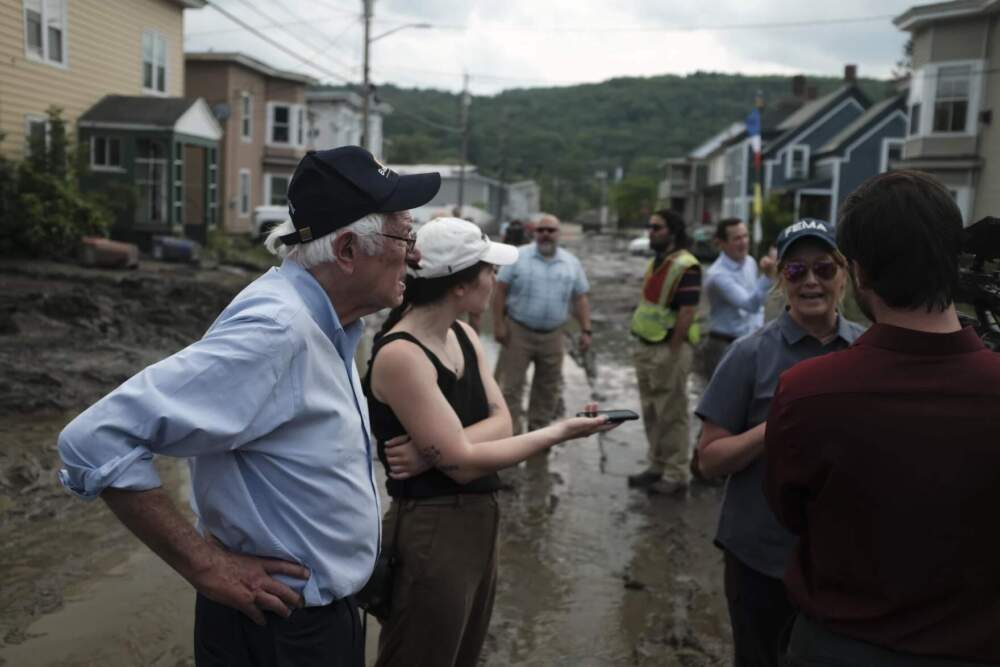
“In some cases, constituents reported not knowing whether they were being asked for additional information or that they could appeal an initial determination,” the delegation wrote to FEMA last month. “In other cases, constituents reported submitting an application to FEMA on multiple occasions before the application was finally accepted.”
Balint said she’s heard from constituents whose ability to recover from the flood was hobbled by FEMA’s confusing messaging to survivors.
“Why would you lead with a statement that you’ve been rejected or denied when, in fact, all they’re asking for is for further documentation?” Balint said in an interview with Vermont Public.
Balint said the application and appeals processes are especially problematic for states that don’t have the municipal infrastructure to aid residents as they try to recover.
“We’re dealing with antiquated systems across the board, and this is something that’s going to take initiatives from people like me, from small, rural states, that really need to have a system that is more streamlined for our needs. And I know that I am not alone in this,” she said.
FEMA said in a written statement to Vermont Public that it has initiated a “multi-year transformation effort” during which the agency will be “evaluating how to provide survivors with additional transparency in their IA journey and communicate with them through their preferred channels, including online, in person, or over the phone.” Those plans include updating “aged IT infrastructure" to allow survivors to track their applications.
Stevens said FEMA instituted “the most significant update to survivor assistance in the last 20 years” in March. And he said the “simplified” application process will “provide flexible funding directly to survivors when they need it most.”
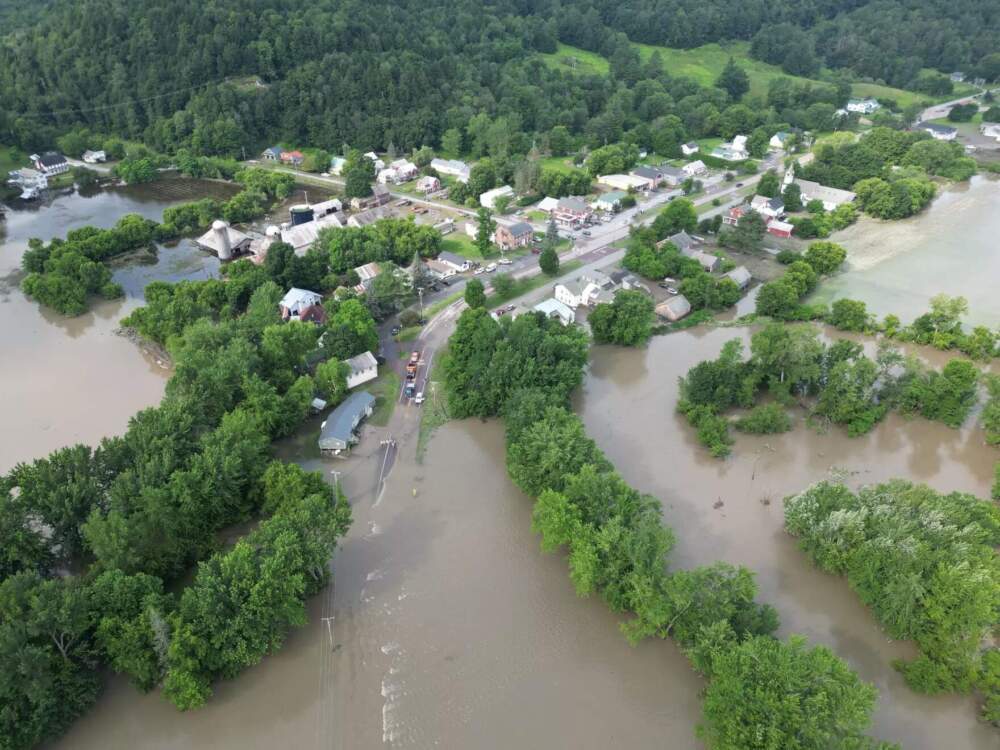
‘Oversight overdose’
In fiscal year 2022, FEMA incurred mission-support costs of approximately $500 million to disburse an $18 billion Disaster Relief Fund, according to Carlos Martin, a fellow at the Brookings Institution who’s conducted extensive research on the U.S. federal disaster response apparatus.
FEMA said administrative costs related to its response to the July floods “are in line with other disasters of similar magnitude.”
Farnham said the state will eventually receive in excess of $600 million worth of assistance to rebuild public infrastructure, such as the state office buildings in Montpelier, though that will likely take years to disburse. FEMA said it will also provide $80 million in hazard mitigation grants to Vermont, along with $5.4 million for search and rescue and other services requested by the state.
“In states where they unfortunately go through this a lot more often, they’ve had the unfortunate necessity of having to learn FEMA’s systems ... whereas we’re still definitely in a learning phase. And yes, it’s been a bumpy ride in some ways.”
Douglas Farnham, Vermont’s chief recovery officer
Martin said FEMA’s administrative costs accrue largely from FEMA’s efforts to minimize waste, abuse and fraud.
“Unfortunately we have a federal system that’s set up with so many strings that that kind of compliance takes up a huge part of the … costs that the federal government has to employ,“ he said. “So unfortunately that does create a lot of additional bureaucracy. That kind of level of auditing and monitoring does create costs.”
Martin said that, based on his research, the intensity of FEMA’s compliance efforts is out of line with the threat posed by people trying to game the system. It’s a phenomenon that Martin has dubbed “oversight overdose."
“We overestimate the potential for that kind of malicious error or fraud,” he said.
Last summer’s floods marked the first time since Tropical Storm Irene, 2011, that Vermonters were eligible for individual assistance from FEMA. Vermont’s top recovery officer, Farnham, said the state’s lack of familiarity with the individual assistance program likely contributed to Vermonters’ frustrations.
“In states where they unfortunately go through this a lot more often, they’ve had the unfortunate necessity of having to learn FEMA’s systems and to be able to navigate their bureaucracy a little bit more than us, whereas we’re still definitely in a learning phase,” he said. “And yes, it’s been a bumpy ride in some ways.”
A combination of bureaucratic and cultural norms at FEMA resulted in what Farnham characterizes as a process that is, in his words, “a little bit impersonal, a little bit aggressive for Vermonters’ tastes.”
“I think really aggressive anti-fraud postures kind of put us off a little bit as well, right? Because we don’t feel trusted and we don’t feel like they’re treating us like humans,” he said. “We feel like they’re just pushing back against everything.”
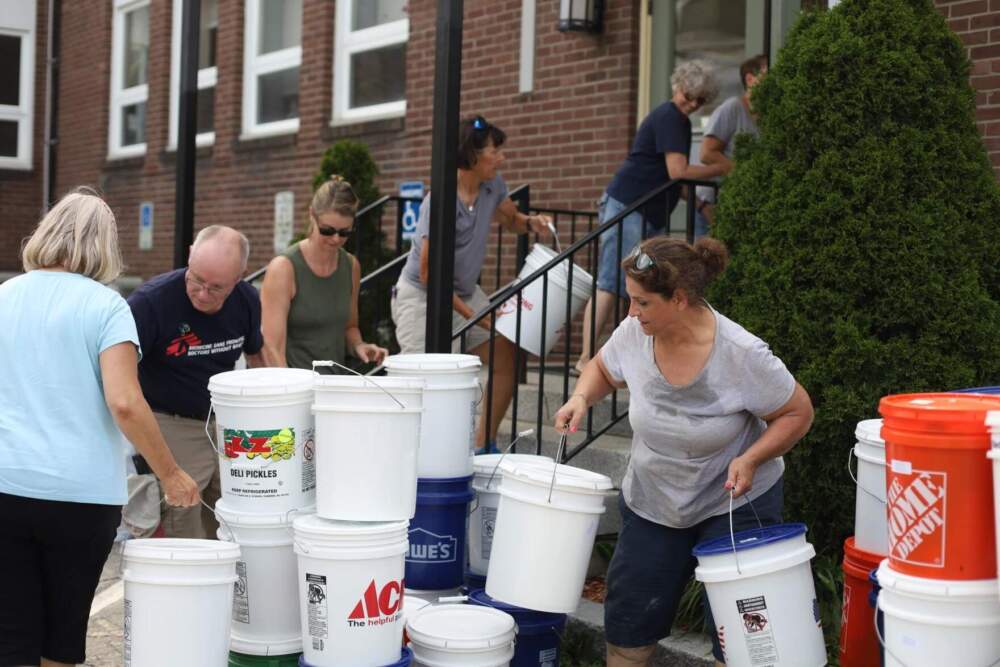
Local volunteers try to pick up the pieces
With so many Vermonters and aid workers frustrated with FEMA’s process, and so many households still damaged, the monumental task of addressing the still-unmet needs of flood survivors has fallen largely on the shoulders of local, volunteer recovery groups. They say they’re not getting the help they need to accomplish the mission.
“I mean, it’s going to be a year soon, right? And are people feeling closer to recovery? Not in the Northeast Kingdom,” Kari White, who helps run KURRVE, a long-term recovery group that’s working in Orleans, Essex and Caledonia counties, said in April. “We have not rebuilt any homes.”
In a follow-up interview last month, White said KURRVE has finally started in on some repairs and rebuilds, thanks to help from the United Methodist Committee on Relief. She said her organization feels like it might be at a "turning point, but not because of FEMA."
"It's not all on FEMA," White said in an email. "Local communities in Vermont are not structured in a familiar way for FEMA to work into and were not prepared to work collaboratively with FEMA for the July 2023 flooding. There just wasn't a critical mass with the experience to understand and make full use of the FEMA processes and resources."
There are about 10 long-term recovery groups that have formed in flood-hit communities around the state. And the hundreds of cases they’re managing often represent the most severe flood-related situations.
White and other long-term recovery volunteers say these volunteer groups don’t have the human or capital resources to undertake the projects needed to make people whole.
“So it’s a really laborious, complicated process administratively, but certainly for survivors too," White said. "And I can see why people give up."
Sarah Henshaw, the coordinator at LeARN, a long-term recovery group in Lamoille County, said her organization didn’t receive a full list of affected households from FEMA until April.
“It kept me up at night before I saw the data, thinking that there was probably folks that we hadn’t reached,” she said. “And it’s devastating to learn that I was right, and tragic to hear the stories that keep coming in.”
Many volunteers say the shortcomings in FEMA’s response have contributed to the quagmire. And the agency’s failings, according to people like Melanie Carpenter, have cost the agency any trust it might have had before rains pummeled the state last July.
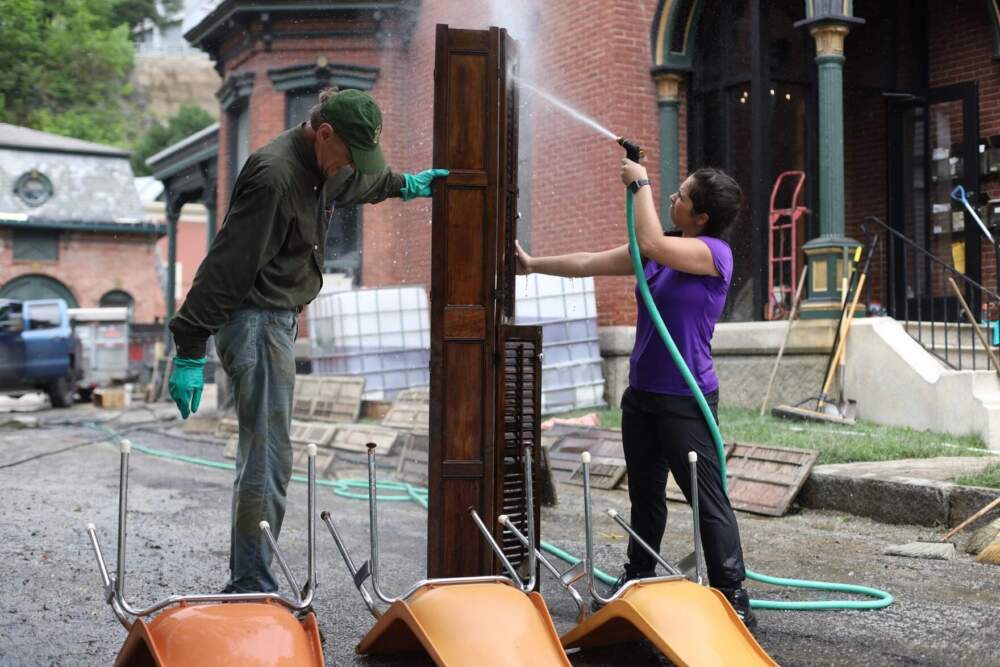
She said that’s especially concerning for people who still live in low-lying areas along river corridors that, according to climatologists, are likely to experience more severe and frequent flood events due to climate change.
“And having the anxiety of, ‘This will be the system that comes back again,’” Carpenter said. “And for the people that may be living in the places that will be affected again, they have lost confidence in their support of the federal government.”
Anne Ward told Vermont Public recently that she’s given up altogether on getting any aid from FEMA for Mosaic, the small nonprofit in Barre City that flooded last July.
Mosaic, which is now renting a space for staff and clients, owned the building. It was one of the organization’s biggest assets.
"After hundreds of hours of working with [FEMA], it's a black hole of nothingness,” Ward said. “And I don't expect a penny from them, so I'm walking away."
This story is a production of the New England News Collaborative. It was originally published by Vermont Public.